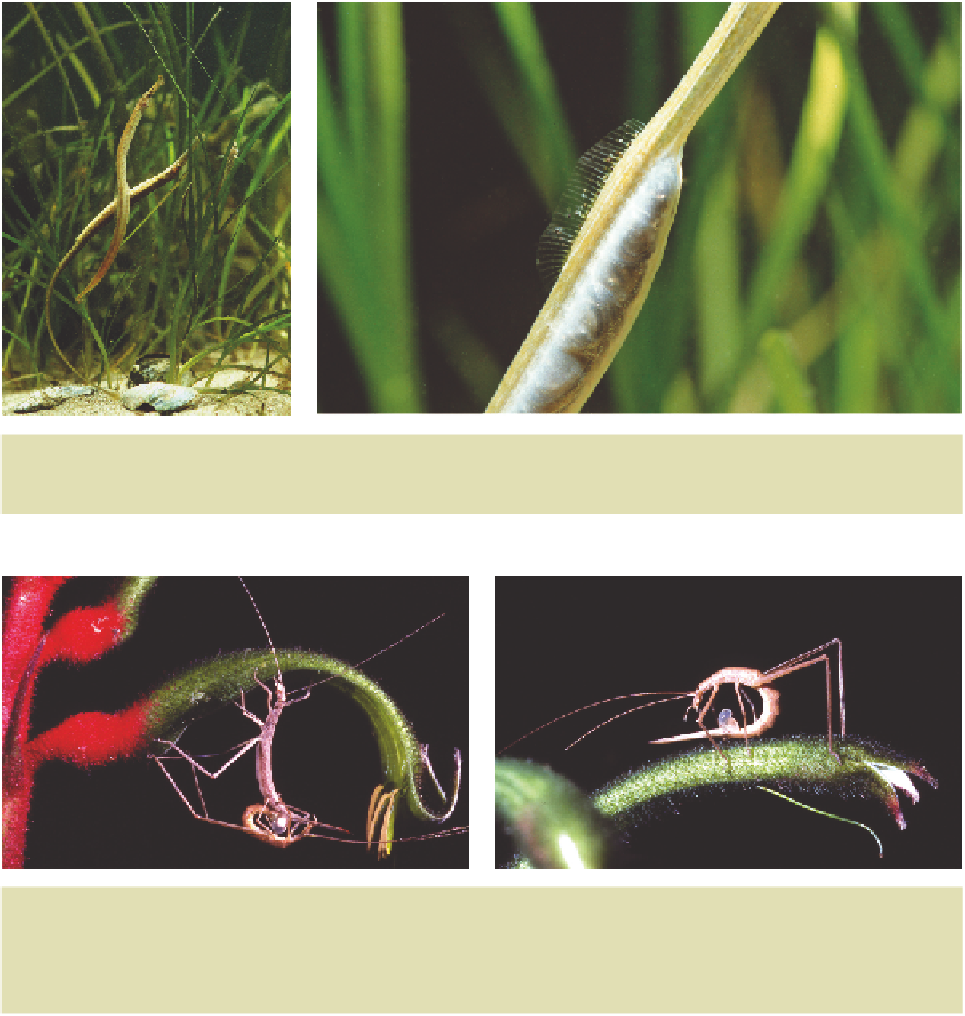Biology Reference
In-Depth Information
(a)
(b)
Fig. 7.14
Sex role reversal. (a) A pair of pipefish
Syngnathus typhle
. The male is in front, the female is upside down
below him. (b) A pregnant male pipefish with a brood pouch full of developing young. Photos © Anders Berglund.
(a)
(b)
Fig. 7.15
The katydid (bush cricket)
Kawanaphila nartee
from Australia on kangaroo paw flowers. The male
produces a large protein-rich spermatophore. (a) A pair together at the end of copulation, with the male (curled
up behind the female) depositing his spermatophore. (b) The female bending over to eat the spermatophore.
She will use this food to help her form eggs. Photos © Darryl Gwynne.
males can produce spermatophores more rapidly. Access to receptive females now limits
male success, and males compete for females, with females rejecting some males.
Similar seasonal changes occur in two-spotted gobies,
Gobiusculus flavescens
, a
common fish along the rocky shores of western Europe. Breeding males defend nest
sites in seaweed and empty mussel shells to which they attract females for spawning.
… and in gobies






























